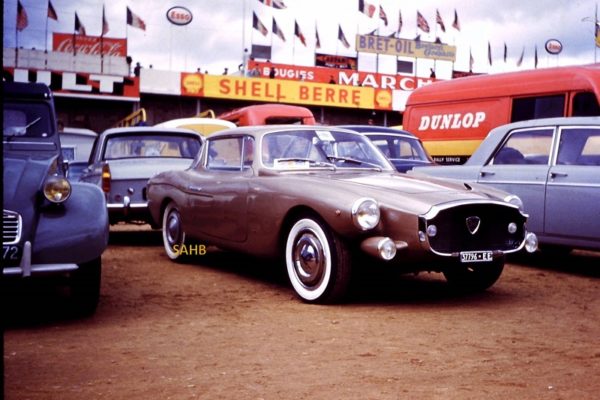
The scene is the car park at Le Mans, probably in 1962. The cars vary from modest to middle-class. Except one: the Lancia Loraymo.
It came from the fertile mind of industrial designer Raymond Loewy, a man of whom it was said in 1940: “…Loewy is the only American designer who can cross the country in a car, train or plane of his own design.” Born in France in 1893, he spent most of his career in the United States and was naturalised there in 1938. Such was his fame that he featured on the cover of Time magazine on 31 October 1949. His many designs included the Shell logo, the Greyhound Scenicruiser bus, the Lucky Strike package, Coldspot refrigerators, the Studebaker Avanti, the Pennsylvania Railroad S-1 and T1 locomotives and the livery of Air Force One. Loewy retired at the age of 87 in 1980 and returned to his native France. He died in Monte Carlo in 1986.
The Lancia Loraymo was a design study, presented at the Paris Motor Show in 1960. It was based on a Lancia Flaminia chassis and had that car’s 2.5-litre V6 engine, tuned by Nardi & Danese with three Weber twin-choke carburettors and a modified camshaft to develop 150 bhp instead of the original 119 bhp. The name Loraymo was derived from the cable address of Loewy’s New York office and was clearly a partial anagram of Loewy Raymond.
The most remarkable design feature of the car was the attachment of the additional driving lights, connected by thin struts to the radiator grille. Just visible in this picture is the unusual wrap-round rear window, above which was originally a roof spoiler supported by extensions of the B-pillar, but it is not visible here – perhaps it had been removed at this time. Another clue to its fall from grace as a motor-show starlet are the unexceptional hubcaps; the car started with highly polished “moondisks” that covered the whole surface of each wheel.
Opinions were sharply divided at the car’s first showing, and no manufacturer took up the design as it stood. So Loewy himself used the car as his daily driver for a few years before selling it. It is therefore possible that it was he who had parked the car at the track on the day of this photo.
The subsequent history of the car is fascinating. The car made its way to America and was rediscovered there much later, without its original engine, by members of the American Lancia Club; in 1987 they handed it over to the Lancia Museum, who restored it to its present condition, with the rear spoiler, correct hubcaps and correct engine. The car is still part of Fiat Group’s works museum in Turin and is exhibited throughout Europe at classic car events.
The car may not have been a success at Paris in 1960, but in 1961 the new president of Studebaker, Sherwood Egbert, desperate to produce a saleable product for the ailing business, commissioned Loewy’s consultancy to design a sporting car. Loewy’s team of Tom Kellogg, Bob Andrews, and John Ebstein achieved this in only 40 days. The result was the Avanti – and the influence of the Loraymo upon that car is clear.
Picture courtesy of Guy Loveridge. The photograph was taken by Lionel Clegg of Mintex and appeared in Guy’s book “Mintex Man”.







Leave a Comment